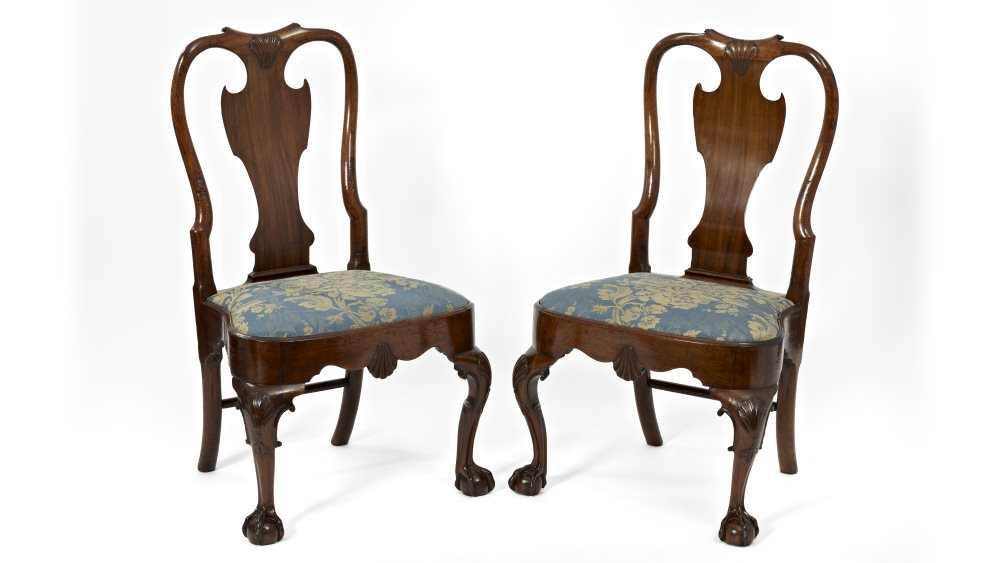The allure of 18th-century furniture is undeniable; its intricate details, timeless elegance, and rich materials still capture the imagination of those with a taste for refined luxury.
This era, renowned for its unmatched craftsmanship, has shaped the world of interior design in ways that continue to inspire us today.
In today’s article, House of Chippendale invites you to explore the artistry behind 18th-century furniture, its defining styles, and how it still graces our homes with an air of grace and timeless beauty.
Let us delve deeper, together!
The Hallmarks of 18th-Century Furniture Craftsmanship
The 18th century was a defining era of cultural refinement and artistic brilliance, where furniture design emerged as a true expression of societal evolution. From the understated grace of Queen Anne to the lavish intricacy of Rococo and the dignified simplicity of Neoclassicism, 18th-century furniture embodied the sophistication, innovation, and cultural aspirations of its time.
These are the defining features of this iconic craftsmanship, including:

1. Meticulous Handcrafted Details
Every piece of 18th-century furniture tells a story of craftsmanship, skill, and unwavering attention to detail.
Artisans of this period poured their expertise into each creation, carving delicate motifs like acanthus leaves and intricate claw-and-ball feet with unparalleled precision.
The construction was equally sophisticated, with dovetail joints ensuring the furniture's durability and hand-polished finishes showcasing the beauty of the wood. This careful craftsmanship makes 18th-century furniture a functional object and a work of art.
2. Luxurious Materials and Finishes
The materials chosen for 18th-century furniture were nothing short of extraordinary. Solid hardwoods like mahogany, walnut, and rosewood were prized for their rich tones and durability, which each piece could endure for generations.
Furniture was often adorned with gilded accents, fine inlays, and luxurious velvet and silk upholstery, adding a sense of grandeur and refinement.
The elegance of these materials, combined with expert craftsmanship, created furniture that exuded sophistication and beauty.
To elevate your space, explore the House of Chippendale collection now.
3. Influence of European Design Movements

The 18th century was a time of significant cultural and artistic transformation, and this is reflected in the furniture designs of the era, such as:
a. Chippendale (1750-1780)
A style that remains iconic to this day, Chippendale furniture blends Gothic, Rococo, and Chinese influences, resulting in opulent and graceful pieces.
The intricate carvings and ornate details of Chippendale pieces make them so highly sought after by collectors and connoisseurs of fine furniture until now.
At House of Chippendale, we take pride in mastering the art of authentic reproductions, drawing inspiration from Thomas Chippendale, the Louis XVI, and the Empire Neoclassic styles of France. Visit us now!
b. Queen Anne (1702-1714)
With its delicate curves and graceful cabriole legs, Queen Anne furniture is known for its understated elegance. Distinguished by its elegant S-shaped curve, this design often gracefully culminates in a finely crafted pad, trifid, or club foot, adding a touch of timeless sophistication.
Queen Anne furniture focused on achieving perfect proportion and unparalleled comfort, with chairs boasting high, gracefully arched backs and luxuriously cushioned seats.
This style's timeless simplicity and refined elegance cemented its enduring popularity, influencing Britain and its American colonies for generations.
c. Rococo (1730-1760)
This style is all about extravagance and playfulness. With its asymmetrical designs, floral motifs, and elaborate carvings, it is the epitome of theatricality in furniture design.
The Rococo style embraced lighter woods like oak, beech, and cherry, often enhanced with gilding or delicate paintwork. Chairs and settees boasted graceful, sinuous curves, with cabriole legs, scrolled arms, and plush, sumptuous upholstery.
Motifs inspired by nature, such as shells, flowers, and acanthus leaves, were prominent, showcasing the era's deep admiration for organic forms. With a focus on comfort and opulence, this style departed from its more formal predecessors, bringing a sense of playfulness and indulgence to the furnishings of the time.
The Lasting Legacy of 18th-Century Furniture
1. Timeless Appeal in Modern Interiors
Although the 18th century may seem distant, its influence is alive and well in today’s luxury interiors. The elegance and sophistication of classic designs like Chippendale and Queen Anne continue to inspire contemporary furniture, proving that excellent craftsmanship transcends time.
Modern luxury brands now seamlessly blend traditional designs with modern functionality, allowing the past to enrich the present while offering the comfort and convenience of today’s lifestyle.
18th-century furniture is no longer confined to museums and private collections; it is a living part of our homes, infusing them with a sense of history and grandeur.
2. The Value of Antique and Reproduction Pieces
For those with an eye for elegance, 18th-century furniture is not just a relic of the past but a coveted treasure.
Authentic period pieces are prized for their historical significance and unmatched craftsmanship. However, as original pieces become rarer, high-quality reproductions have become a popular option for those who wish to bring the beauty of this era into their homes.
These reproductions maintain the same level of artistry, ensuring that the legacy of 18th-century furniture continues for future generations to enjoy.
3. The Role of Craftsmanship in Preserving History
At House of Chippendale, we take great pride in preserving the craftsmanship that defines 18th-century furniture. Our artisans are committed to preserving traditional methods, with each piece reflecting the same attention to detail and timeless elegance as those from centuries ago.
This commitment to craftsmanship allows us to continue the legacy of this distinguished era, offering our clients luxury furniture that is as enduring as it is beautiful.
Also Read: The History of Chippendale Furniture: An Iconic Legacy
The legacy of 18th-century furniture is one of timeless elegance, superior craftsmanship, and unparalleled beauty. Whether antique or reproduced, finely crafted pieces bring an undeniable sense of refinement to any space.
House of Chippendale proudly continues this legacy by creating exquisite handmade mahogany furniture and home accessories that are functional and works of art. By investing in these pieces, you are not just acquiring furniture but bringing a piece of history into your home.
Contact us now for inquiries and personalized assistance!





